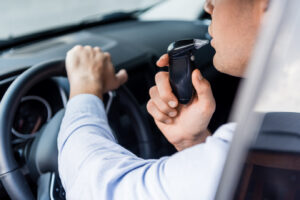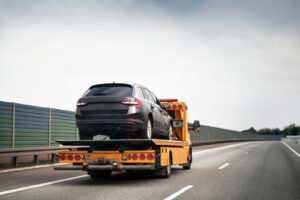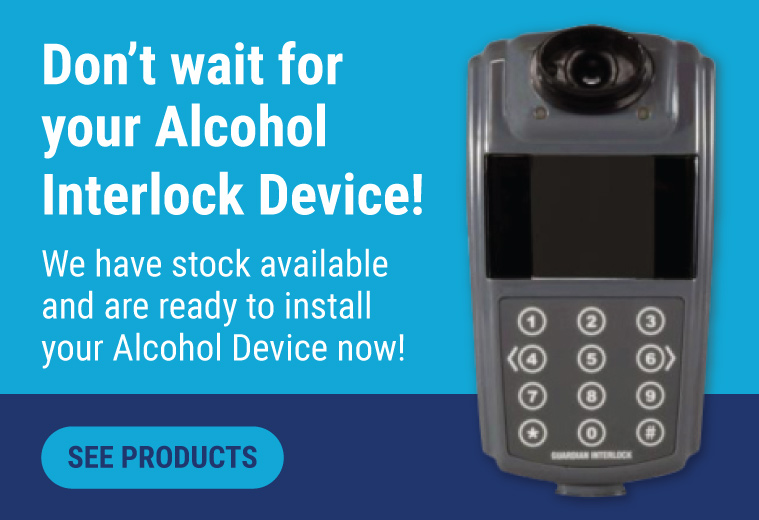
What Happens If I Get Caught Driving Without An Interlock Installed?
Picture this. It’s Friday evening, you’ve just finished work, and you’re eagerly anticipating a fun night in with friends, watching the footy. But wait! You suddenly realise that you forgot the crucial ingredient for the evening— the pizza. You head out the front door and then it hits you—you left your car at the station. Your wife’s car is there, but it doesn’t have an alcohol interlock device. In that split second, you ask yourself, “What’s the worst that could happen?”
If you’re enrolled in the alcohol interlock program and you’ve found yourself in a similar situation, then this article is a must-read for you. We’ll explore the ins and outs of alcohol interlock programs, explaining why you should never drive without an interlock device and sharing insights on some other essential rules you must follow. So, let’s dive in and find out what happens if you get caught without an interlock installed.
Alcohol Interlock Programs: What Are They and Why Do They Matter?
Alcohol interlock programs are state-based crucial initiatives implemented by the Australian government to promote road safety and support the rehabilitation of drink driving offenders. These programs are designed to help individuals safely return to driving after they have committed multiple drink driving offences. While the duration of these programs differs between states, they all prevent the individual from getting behind the wheel of a vehicle that has not been fitted with an alcohol interlock device.
By mandating the use of alcohol interlock devices, these mandatory interlock programs promote safer driving practices and help offenders disassociate driving from drinking. This is crucial because the ultimate goal of this program, as well as a range of other government initiatives, is to protect the individual and the wider community from the dangers of drink driving.

This initiative is supported by the installation of alcohol interlock devices. These small handheld devices are directly linked to a vehicle’s ignition system, making it impossible to start the vehicle if alcohol is detected in the driver’s breath. To ensure compliance, the interlock device incorporates fail-safes such as a built-in camera to verify the identity of the driver during breath tests. Additionally, multiple breath tests may be required throughout the journey to ensure the driver maintains sobriety.
The Risks and Consequences of Non-Compliance
Despite the importance and intentions of these programs, some individuals willingly commit interlock violations, such as driving without an interlock. However, some participants do require further information, and questions often arise, such as whether the individual can drive a work vehicle without an interlock device.
In short, the answer is no. Driving without an interlock while enrolled in the program is one of the most significant offences the individual can commit, and it is illegal. If you need to drive a work vehicle throughout the duration of your program, this will need to be discussed from the outset of the program. Alternative arrangements can be made to help the individual complete the program safely and simply, but if these are not arranged from the outset and listed within the program conditions, they will be viewed as an offence.

The punishments that you face can for driving a vehicle that does not have an alcohol interlock device installed can be significant and they can be very disruptive to your driving future. These punishments can include hefty fines, an extended licence suspension and vehicle impoundment. Understanding the risks and consequences of non-compliance can serve as a powerful motivator to adhere to the rules of the interlock program. By doing so, you not only avoid potential legal punishments but also contribute to the overall safety and well-being of everyone on the road.
Adhering to the Interlock Program: What Are The Other Essential Rules?
Ensuring you only drive your specified vehicle which is fitted with an alcohol interlock device is crucial to complying with the conditions of your alcohol interlock program. However, there is a range of other rules and policies that you must be aware of to ensure you complete the program safely and without complications.

Regular Servicing
Regular servicing of the interlock device is a major component of the program. It is mandatory to comply with the state program requirements for device maintenance and calibration. These must be completed at regular intervals which differ between each state, usually requiring either monthly or bimonthly servicing. Failure to do so can result in device malfunctions and program violations, potentially leading to further penalties and consequences. Make sure to follow the prescribed schedule for servicing and calibration, as this ensures the accuracy and reliability of the device.
Rolling Retests
Throughout your journey, the interlock device may prompt you to perform rolling retests. These retests are designed to ensure that you do not consume alcohol at any point during your trip. It is crucial to comply with these retests promptly and safely. Attempting to evade or ignore the rolling retests is considered a violation of the program and may lead to penalties. Remember, the purpose of these retests is to ensure responsible and alcohol-free driving for everyone’s safety.
Removal of the Interlock Device
Any attempt to tamper with, disable, or remove the interlock device is strictly prohibited. The device is designed to prevent unauthorised use and ensure compliance with the program. Engaging in such actions is considered a serious offence and can lead to severe consequences such as fines and program extension. This is also highly unsafe and can result in malfunctions within the ignition of your vehicle. It is vital to respect the integrity of the interlock device and refrain from any actions that compromise its function.
By adhering to these essential rules, you’ll be able to demonstrate your commitment to the interlock program and your determination to make positive changes in your driving habits. Remember, the program aims to ensure your safety, the safety of others, and help you successfully complete your rehabilitation.
Do You Need To Install An Alcohol Interlock Device?
Guardian Interlock is among Australia’s most reputable alcohol interlock providers, with locations in every state in Australia. Therefore, you can be sure that your Guardian-approved service centre is qualified for interlock device installation, servicing, and removal of your interlock device, and our devices are compliant with your state’s regulations. Email admin@guardianinterlock.com.au or call 1300 881 005 today to get started with your alcohol interlock program.
We understand how essential a vehicle is, whether for work purposes, family responsibilities, or other commitments. We’re committed to helping our clients remain compliant and on the road. Our customer care representatives are available to take your calls 8.30 am – 5:30 pm Monday to Friday. We also have an Emergency assistance line available 24 hours a day, seven days a week.


